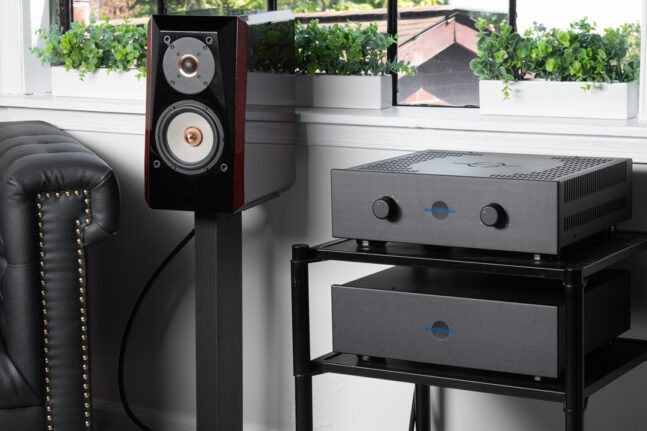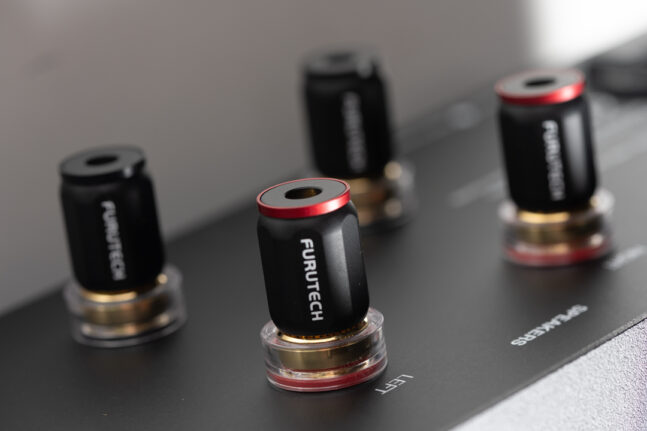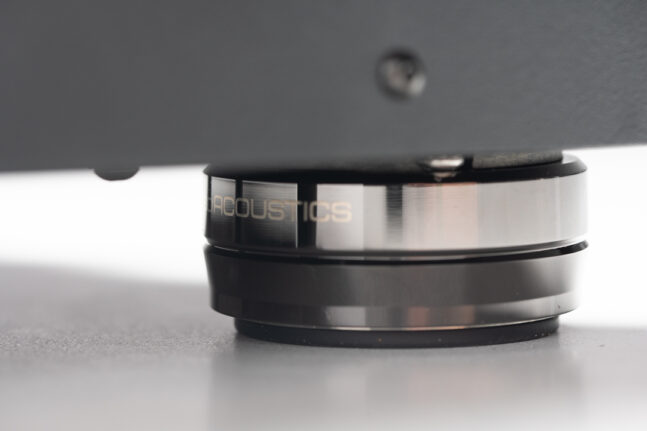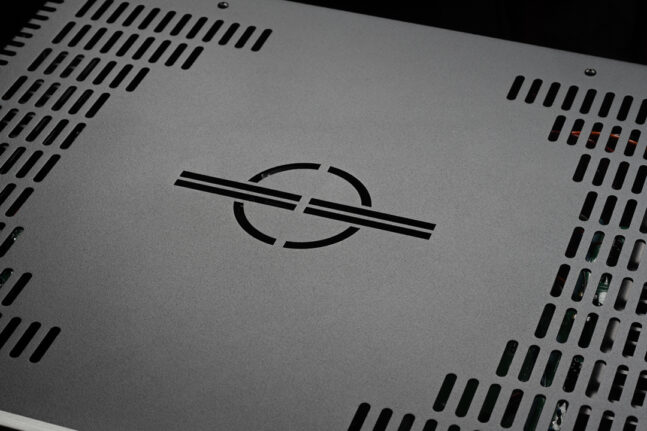A World-Class Made in Canada Wonder
Imagine being wrapped in sound so pure and powerful that it feels like the music is alive, breathing, and pulsating around you. This is the magic of a killer amplifier — one that turns ordinary audio into an unforgettable experience. In the world of audio engineering, the amplifier is the unsung hero, enabling the listener to hear the soft whispers of a musical note and the thunderous roar of a crescendo.
But what if an amplifier could do more than just pump up the volume ? What if it could deliver an incredibly natural presence that makes every note hit with authenticity and strength, letting you experience music as if you were right there in the recording studio or concert hall, catching every nuance and subtlety? I mean, that’s always been the goal in music playback, right? It’s what nearly every amplifier maker on the planet is attempting to do, and by throwing enough money at the problem, there are many amplifiers available for sale this very moment that fit the bill.
The problem, however, is the bill itself — it’s often completely out of reach for the average audiophile. Sure, if handed twenty-five or fifty or a hundred and fifty grand, each of us could easily locate the perfect amplifier. It’s not that challenging, or dare I say, even that interesting. The really hard thing, the interesting thing, the cool thing is to build a music playback system that captures the essence of all those wonderful qualities, but in a package that doesn’t cost the same as a new car.
It turns out that Rene Evans of Saturn Audio agrees with me. He set out to make music equipment that did all the things we want music equipment to do – immerse us in beautiful, natural, smile inducing sound, but at a reasonable price. But Rene wanted to do something else. See, Rene doesn’t come from an audio equipment design background. Instead, he comes from quality control and process optimization. I know, I’m practically falling asleep writing that sentence. But stay with me, because it turns out, the how matters. Rene really believes in the how.
Sure, he could have outsourced the whole thing to a factory on the other side of the world and the product would likely have been very good. But by building his entire manufacturing process close to home, he was suddenly able to influence how his products are made in a much more holistic way. By having suppliers close to home, he could visit each of them to set up the manufacturing processes to Saturn Audio’s standards. He could optimize the transition from prototyping to full scale manufacturability. He could solve manufacturing problems in real time during assembly. The added bonus is that he gets to do something all sons wish they could do: honour their dad’s advice. During our many conversations, Rene once told me that his dad always encouraged him to support local wherever he could. If you don’t take care of your village, your village will not be there for you, his dad told a young Rene, and as he’s built Saturn Audio, that adage stuck with him. You can see Rene taking care of his village in each of the products he makes. I wonder though, if his village is taking care of him? Let’s find out.
 Based just west of Toronto, Saturn Audio emphasizes local sourcing and assembly. According to their website, an impressive 85 % of the components used in their audio products are sourced locally within Ontario and Quebec. This dedication to local manufacturing ensures not only the highest quality but also supports local businesses and craftspeople.
Based just west of Toronto, Saturn Audio emphasizes local sourcing and assembly. According to their website, an impressive 85 % of the components used in their audio products are sourced locally within Ontario and Quebec. This dedication to local manufacturing ensures not only the highest quality but also supports local businesses and craftspeople.
The assembly process itself is meticulous. Each unit is handcrafted by skilled technicians who bring their expertise and passion to every step. From the precise placement of circuit boards to the careful soldering of connections, attention to detail is top of mind. The use of locally sourced components means that quality control is stringent and that every piece is designed to meet Saturn Audio‘s high standards.
Saturn’s commitment to local production extends beyond just the components. The company collaborates with local suppliers for materials such as metal casings, knobs, and other hardware, ensuring that every aspect of their products reflects Canadian craftsmanship. This approach not only reduces the environmental impact of long-distance shipping but also fosters a sense of community and pride in the final product.
The company makes a wide range of highly regarded audio components, including a DAC, phono stage, power and preamps, a world class power conditioner and the subject of this review, their new 701 integrated amplifier. All that boring stuff about quality control was in evidence here. Everything from the packaging to the smallest screws are super high quality. Even the taping on the shipping cartons is a work of art.

Measuring 17 inches wide, 14.5 inches deep and 5.5 inches high, weighing a solid 37 pounds, the 701 is a fairly typical old school class A / B integrated amplifier. Bucking today’s audio jewelry trend of ever more flashy screens, big numbers and buttons galore, Saturn has gone with a soothingly simply design esthetic at the front of the unit. Flanking a blue back lit are two medium sized and very solid feeling knobs that handle input selection and volume and, well that’s it. To help maintain that clean façade, even the power switch can be found on the underside of the case on the right, while the HT bypass toggle is in the same position on the left. Things are just as simple around back, with an IEC inlet, a single set of superb quality Furutech speaker binding posts that accept spades, bananas and bare wire, three sets of RCA inputs, a set of RCA subwoofer outputs along with a HT bypass and two sets of balanced XLR inputs. Again, that’s it. What else do we need? Ah yes, the remote. A beautiful metal affair with a laser cut Saturn Audio logo and simple volume up and down. If you want to switch inputs, you’ll need to get off the couch and stretch your legs, which is probably a good idea anyway, according to my wife.
 I don’t always feel the need to crack open my review samples, but with the 701, I couldn’t resist. After carefully loosening and removing the 8 small screws from the black casework (the 701 is also available in silver if that’s your thing), I peered in on a set of supremely well laid out circuit boards, a huge toroidal transformer and no less than 12 healthy sized capacitors, not to mention some very thick and well-dressed internal wiring. It’s clear that the excellent craftmanship of the external case was more than matched by what I found under the hood. A good sign. That quality carries right down to the feet. Rather than afterthought rubber feet or cheap metal ones, Saturn Audio chose to use a set of high quality IsoAcoustics Gaia 4 footers. A nice touch indeed.
I don’t always feel the need to crack open my review samples, but with the 701, I couldn’t resist. After carefully loosening and removing the 8 small screws from the black casework (the 701 is also available in silver if that’s your thing), I peered in on a set of supremely well laid out circuit boards, a huge toroidal transformer and no less than 12 healthy sized capacitors, not to mention some very thick and well-dressed internal wiring. It’s clear that the excellent craftmanship of the external case was more than matched by what I found under the hood. A good sign. That quality carries right down to the feet. Rather than afterthought rubber feet or cheap metal ones, Saturn Audio chose to use a set of high quality IsoAcoustics Gaia 4 footers. A nice touch indeed.
Listening
I evaluated the 701 with a variety of set ups, but most of the time was spend with my 8 ohm 90 dB Monitor Audio Bronze 500 floor standing loudspeakers, Schiit Audio Bifrost 2 DAC and Sbooster hot-rodded Bluesound Node N130. For this review, I exclusively streamed Qobuz via the BluOS app on my iPhone and iPad.
Rene warned me that the 701 needs time to warm up, but in my excitement to listen to it, I immediately ignored him. I plugged it with the included power cord, connected the Bifrost 2 via a set of XLO balanced cables and listened. It sounded great right out of the box. But with Rene’s voice echoing in my head, I reluctantly heeded his advice and let the 701 play on low volume for a couple of days before listening critically. What I heard when I started serious listening shocked and delighted me, although I suppose it shouldn’t have – I’ve heard Saturn Audio’s gear at several audio shows, and their rooms never disappoint.
At this stage, some may rightly point out that pairing a $6,500 CAD integrated amplifier with a set of $2,000 CAD loudspeakers is an unrealistic mismatch, and while I tend to agree, let me tell you – those Bronze 500’s got the ride of their lives! The sound was full, rich and warm, even coming from a set of loudspeakers which, when pushed, can become ever so slightly frantic. Compared to my Parasound A23 / Schiit Freya+ and Monitor Audio combination, the higher quality 701 exerted is tenacious grip on the Bronze 500’s woofers and was better in every conceivable way, elevating these entry level loudspeakers to heights they’ve not yet experienced.
 While most buyers of the 701 likely won’t be pairing it with entry level loudspeakers, it’s nice to know that this well-made integrated amp will allow you to eke every bit of performance from whatever you hook up to it. That said, I felt it important to listen to the 701 with something more in line with its price tag. To that end, I paid a visit to listening buddy and frequent TED contributor George De Sa’s listening room for several hours of testing. We paired the 701 with George’s reference 4-ohm Dynaudio Confidence C2 Signature loudspeakers ($15,000 USD), a set of beryllium tweeter Focal Electra stand mounts and a set of T+A Elektroakustik Criterion S 230 floor standers ($11,990 USD). I know the Dynaudios and Focals very well, having spent many pleasurable hours listening to George’s system. The 701 powered all of them to truly jaw dropping SLP levels with its mere 110 WPC. In fact, George and I both commented on how capable the 701 was with these very expensive loudspeakers, comparing quite favorably to his reference Bryston 7B3 monoblocs and BR-20 streaming preamp. It’s worth mentioning here that the those Bryston mono blocks are roughly $8,000 Canadian dollars each, while that fabulous BR-20 streaming preamp goes for about $7,500.00! With the Dynaudio’s in particular, we enjoyed wonderful sound staging, easy flowing, natural tones with stunning dynamics and punch. I didn’t want to go home.
While most buyers of the 701 likely won’t be pairing it with entry level loudspeakers, it’s nice to know that this well-made integrated amp will allow you to eke every bit of performance from whatever you hook up to it. That said, I felt it important to listen to the 701 with something more in line with its price tag. To that end, I paid a visit to listening buddy and frequent TED contributor George De Sa’s listening room for several hours of testing. We paired the 701 with George’s reference 4-ohm Dynaudio Confidence C2 Signature loudspeakers ($15,000 USD), a set of beryllium tweeter Focal Electra stand mounts and a set of T+A Elektroakustik Criterion S 230 floor standers ($11,990 USD). I know the Dynaudios and Focals very well, having spent many pleasurable hours listening to George’s system. The 701 powered all of them to truly jaw dropping SLP levels with its mere 110 WPC. In fact, George and I both commented on how capable the 701 was with these very expensive loudspeakers, comparing quite favorably to his reference Bryston 7B3 monoblocs and BR-20 streaming preamp. It’s worth mentioning here that the those Bryston mono blocks are roughly $8,000 Canadian dollars each, while that fabulous BR-20 streaming preamp goes for about $7,500.00! With the Dynaudio’s in particular, we enjoyed wonderful sound staging, easy flowing, natural tones with stunning dynamics and punch. I didn’t want to go home.
But home I did go, and you know what? I didn’t feel that usual sense of disappointment after experiencing a much more expensive setup and then returning to my own. Instead, once I reconnected the 701 to my system and let the music play, I was just as delighted as when I listened to the high-end system. This proves that you don’t need extremely costly equipment to enjoy high-quality, audiophile-grade sound. You just need the right equipment.
More listening
With the 701 once again ensconced in my equipment rack and with the incredible sound I’d just experienced at George’s place still echoing in my mind, it was time to listen to some old favorites. I started with A Night Away by the Metheny Mehldau Quartet (FLAC, 16 / 44.1, Qobuz). This is an excellent recording, sounding wonderfully full and beautiful with the Parasound / Schiit Freya+ setup, but the 701 took the sound to another level entirely. The propulsive impact of the cymbals was exceedingly natural sounding while remaining smooth and refined. Bass was tight and fast, staying muscular and punchy without sounding boomy. Midrange glowed with complexity and detail, never overwhelming. Metheny’s guitar shines here, ringing out clean and clear with being irritating. Compared to the Parasound A23, the 701 sounded more harmonically correct and complete, more real.
On Bruce Cockburn’s Bells of Gethsemane from Crowing Ignites (FLAC, 16 / 44.1, Qobuz), the titular bells (actually a combination of singing bowls, Tibetan cymbals, gongs and chimes) took on a hyper realistic ring and chime that sustained and decayed beautifully and naturally while each bell’s unique tone and texture hung as if suspended right in front of me, each one blooming from a deep black background. Sometimes the sound of a chime or a bell on a given recording can sound manufactured. The sound is technically correct, but not real. That’s not the case with the 701. Each bell was clearly struck by a human being in specific space. There was something perfectly imperfect about each one – each strike told its own story in the moment. Much of that is down to the excellent recording, but it was faithfully and naturally reproduced by the Saturn / Monitor Audio combination.
On the same recording, the baritone guitar was rich and meaty and muscular. It is this idea of muscularity that came back to me over and over again I listened to the 701. The incredibly natural and realistic tones that come through are fortified by the impression of unlimited power on tap. Just like many Canadians I know, the 701 politely goes about its business without immediately telegraphing its incredible power reserves. Need quiet and reserved? The 701 has that. Need delicate filigree? No problem. Need big and brash and loud? The 701 can do that as well, and it appears, everything in between.
Wanting to keep the CanCon going, I turned to Diana Krall. Her rendition of Temptation from The Girl in the Other Room (FLAC, 24 / 96, Qobuz) is a favorite of mine, and I love comparing it to Chantal Chamberland’s recording (FLAC, 24 / 96, Qobuz) of the same song. Both versions are similar enough that on lesser systems one might be forgiven for confusing the two voices, but the 701 made each one instantly recognizable. On her recording, Diana’s voice is a little more tilted up and less smoky and just slightly flirtier than Chantal’s. But Chantal’s voice comes across with the unmistakably dark worldly confidence of someone who’s seen some things. The arrangements, while similar, are also clearly different, with Chantal’s backing band striking a vaguely Latin note, while Diana’s opts for a slightly more upbeat and bluesier rhythm. The 701 also reveals the far larger sense of space and air around Krall’s performance, giving me the impression of a larger recording space.
Conclusion
Earlier I asked whether Rene’s village was taking care of him. It’s clear that his deep concern about the how, whether it’s the local manufacturing process, the thoughtful selection of each part, or working closely with each supplier shows that he is most definitely taking care of his village. The answer to whether his village is taking care of him is clearly evident in this incredible amplifier. The 701’s effortlessly natural tones and wonderfully muscular approach to music playback seemed to fit every musical genre and any loudspeakers I threw at it, comparing favorably to systems costing triple its price and paring beautifully with speakers across the spectrum. Regardless of where you call home, if you haven’t already, it’s time to put Saturn’s 701 integrated amplifier at the very top of your list.
GENERAL INFORMATION
Price: $6,500 CAD
Warranty: 10 years limited warranty
Manufacturer: Saturn Audio,
T.: 519-623-1212,




